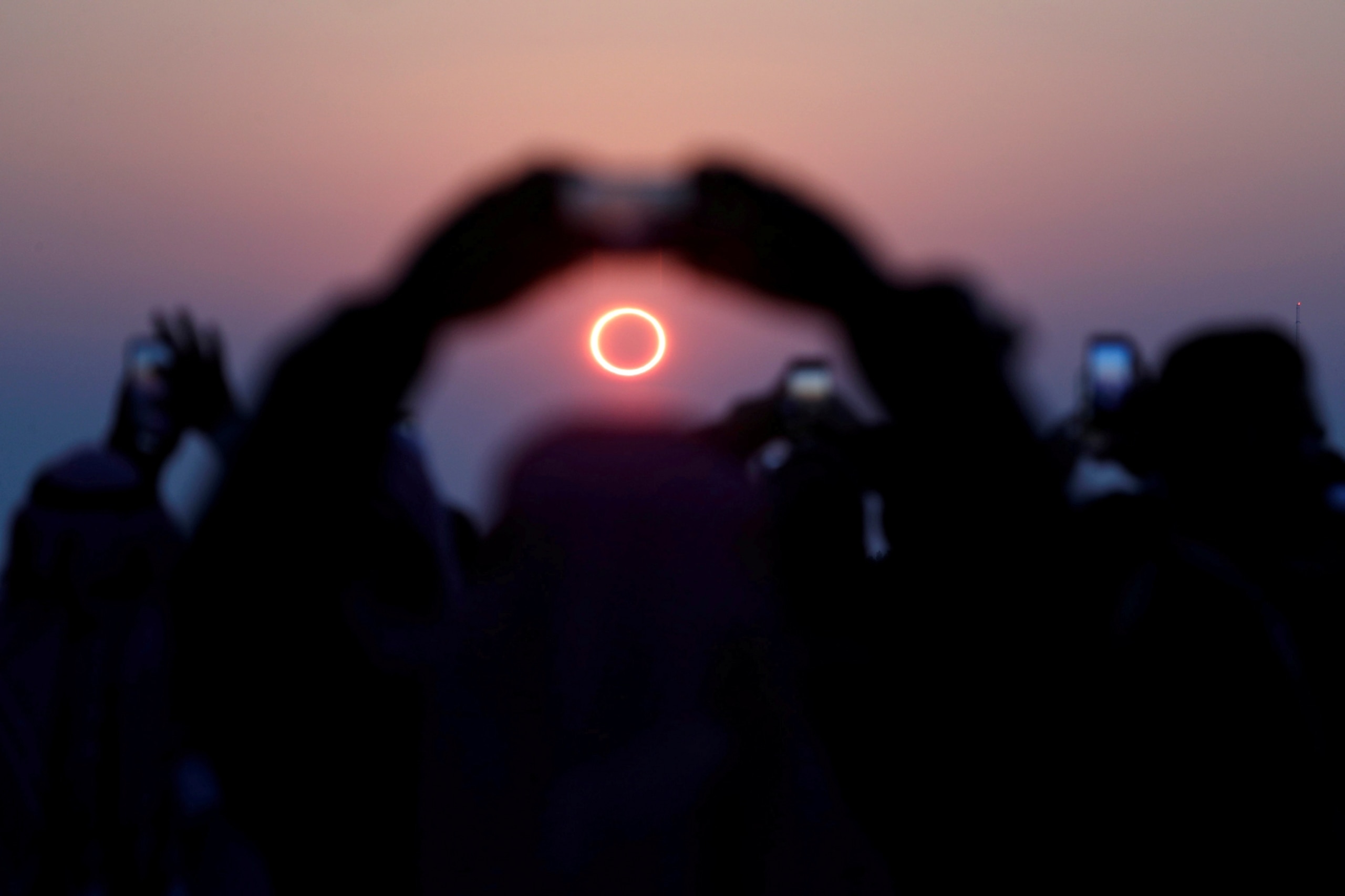A rare ‘ring of fire’ eclipse is coming. Here’s how to see it.
This celestial phenomenon won’t occur in the continental U.S. again until 2039. Here’s what it is and where you can experience it for yourself.
BY ALLIE YANG

PHOTOGRAPH BY HAMAD I MOHAMMED, REUTERS/REDUX
On October 14, a “ring of fire” solar eclipse will appear across a swath of the western United States, as well as in parts of Central and South America. The sun will be blocked by the moon, which will appear slightly smaller, producing the glowing ring in the sky. This phenomenon, known as an annular solar eclipse, was last seen in the U.S. in 2012 and won’t be visible again in the continental U.S. until 2039.
If you are in the path of the eclipse, with the right eye protection, you’ll be able to safely see this rare celestial display—and you might hear and feel the eclipse, too.
All lower 48 U.S. states will get a partial eclipse, but only certain areas in Oregon, Nevada, Utah, Arizona, New Mexico, and Texas will get the full “ring of fire” effect. This phase of the eclipse begins at 9:16 a.m. Pacific time in Oregon and sweeps across the country, passing over San Antonio, Texas, at 11:52 a.m. Central time.
Parts of some Central and South American countries, including Nicaragua, Panama, Colombia, and Brazil, will also see the annular eclipse. Maps created by NASA show the path where the ring of fire will be visible and the times for best viewing.
